Flipping tires, swinging hammers, and squatting twice your own body weight make for a great workout…yet sometimes the simplest exercises are the most effective (and challenging).
Are you ready to take on today’s Dirty Dozen Bodyweight Workout? Let’s do it!
Benefits of Bodyweight Training
Can you spare 10 minutes a day? Then you can do this 7-Day Paleo Weight Loss Bodyweight Workout Challenge!
Click here to get your FREE copy!
If you want to build functional strength, you need to start with basic bodyweight training that conditions you to be strong, fast and flexible. But basic doesn’t mean boring. In fact, bodyweight training includes some of the most interesting and varied forms of exercise, as the only limitation is your own imagination.
Yes, it’s cool to be able to do Olympic lifts. And yes, our primal ancestors would pick up, throw, and drag heavy things, but they could only do that because of their foundational fitness. If you’re interested in hardcore heavy lifting, you need to have built that strong foundation first.
Bodyweight training is a legitimate way to build lean mass and burn body fat. The bonus? You have everything you need with you right now.
The Key to an Effective Bodyweight Workout
As with any workout, success comes from variety, good form, and doing exercises that promote balanced muscle development. (In other words, you want to work your hamstrings as often as your quads, and your back muscles as often as your abdominals.) But for a truly efficient bodyweight workout, there are three key points to consider:
Move in every direction
Day-to-day movement patterns are very linear for most people. We tend to spend a lot of time moving forward, and we sometimes move backward, but it’s very rare to see people walking around sideways! Being functionally fit and achieving an optimal physique comes from being strong and flexible in all ranges of motion. This means performing exercises that take you forward, backward, side-to-side, and up-and-down; multi-directional movement should be considered in all forms of training, including strength, agility and flexibility.
Move very fast, very slow, and somewhere in between
To increase lean mass and improve overall athletic performance, you must constantly challenge your muscles. Performing exercises at different speeds — especially within one workout — forces muscle adaptation, which not only leads to muscle development, but also stimulates bone growth and strengthens your ligaments and tendons. (1) (2) (3).
Take advantage of your environment
The beauty of bodyweight training is not being confined to a weight rack. The spaces and objects around you have unlimited potential to add interest and challenge to your workout. Training outside on uneven terrain challenges proprioception while giving you some essential vitamin D. Everyday household objects can be used as benches, steps and weights. Keep it simple, keep it primal, and draw inspiration from what you have access to. See a hill? Run up it as fast as you can. See a set of stairs? Squat jump your way to the top before completing 15 push-ups.
The Dirty Dozen Bodyweight Workout
The following bodyweight workout includes the three key factors that I outlined above: exercises are multi-directional, performed at different tempos, and can be done anywhere. The moves combine calisthenics (basic bodyweight exercises like push-ups, squats, and lunges), and plyometrics (explosive bodyweight exercises, like burpees, jump lunges, and up and overs). Some exercises have the additional challenge of holding a dumbbell or wearing a weighted vest. You have a few options here:
- Beginners: No weight
- Intermediate: Hold 10 lb dumbbell
- Advanced: Weighted vest
Each exercise: 12 reps
Single-sided exercises: 12 reps per side
At the end of the series, rest for 60 seconds. Repeat for a total of 3 rounds.
3,2,1 Power Squat
Stand with the feet slightly wider than hip distance, with your weight in the heel of the foot. Squeeze your glutes and hamstrings as you take 3 counts to bend your knees to a 90º squat position, pause for 2 counts, and then power up for 1 count. (Option: Hold one heavy weight at your chest, or two weights by your side.)
Back Lunge Balance
Stand on the left foot with the right knee lifted at hip height. Step the right leg back and bend both knees to 90º into a lunge. Squeeze the left leg and stand back up, lifting the right knee again. Keep your spine straight and your front knee over your front ankle. (Option: Hold one heavy weight at your chest, or two weights by your side.)
Barebones Burpee
This burpee is about speed; omit the push-up and the final jump and focus on continuous movement. Start by standing with the feet under the hips. Bend the knees, place the hands to the floor and jump both feet back to plank position. Immediately return the feet under your chest and stand back up. Continue moving without rest for all 12 repetitions.
Crab Walk
Keep this move low and slow. Start in a squat position, keeping the knees bent as you take six steps to the right side (moving right foot, left foot), remaining in the squat. After six steps move back to the left. Repeat one more set of six steps in both directions, for a total of 12 crab walks to the right, and 12 to the left. (Option: Hold one heavy weight at your chest, or two weights by your side.)
Wide Push-up
Start in plank position with the hands wider than the shoulders. Keep the abdominals engaged and the back flat as you bend your elbows to 90º (the elbow tips are pointing to the sides). Straighten the arms to press back up. Modify by dropping to your knees.
Split Lunge
Start in a lunge position with the right foot forward and both knees bent at 90º. Jump up, switching feet in the air, to land in a lunge with the left foot forward. Repeat for 12 jumps on each leg.
Hop Overs
Start standing on your left foot, with your right knee lifted towards hip height. Imagine that you are standing next to a low fence as you hop up and over to the right side, landing on the right foot with the left foot lifted. Then hop back to the left. Continue to alternate hops for 12 repetitions on each leg.
Narrow Push-up
Start in plank position with the hands directly below the shoulders. Keep the abdominals engaged and the back flat as you bend your elbows, lowering the body halfway down towards the floor with the elbow tips pointing back to your ribcage. Straighten the arms to press back up. Modify by dropping to your knees.
Single Leg Squat
Start standing on the left foot with the right foot hovering above the ground. Bend the left knee and sit the hips back into a squat position; squeeze your left glute and hamstring to stand back up. Repeat 12 repetitions on the left leg before switching sides. Modify by keeping your right toes on the ground. (Option: Hold one heavy weight at your chest, or two weights by your side.)
Mountain Climbers
Start in plank position with the hands directly below the shoulders. Keep the abdominals engaged and the back flat as you pull one knee at a time towards the chest. Moving quickly (running the knees) is more cardio, and moving slowly is more core work. You can choose! Repeat for a total of 24.
Frog Sit-up
This move needs to be slow and controlled. Start by lying on your back with the soles of the feet together and knees open wide. Without using momentum, engage your abdominals and slowly roll your spine up and away from the floor until you come to a seated position at the top. Take as much time as you need to lower back to the floor. This is one repetition. (Tip: imagine peeling each spinal vertebrae away from the mat.)
Side Plank Hip Drop
Start in a forearm side plank position: the left forearm is on the floor with the elbow directly under the shoulder, the legs are extended with the right foot in front of the left. Engage your side waist muscles (the obliques) as you lower your left hip halfway towards the floor, and then press back up into a full side plank. Repeat 12 repetitions before switching sides. To modify, hold the plank without lowering the hips.
(Your Next Workout: 12-Minute Indoor Cardio Workout)


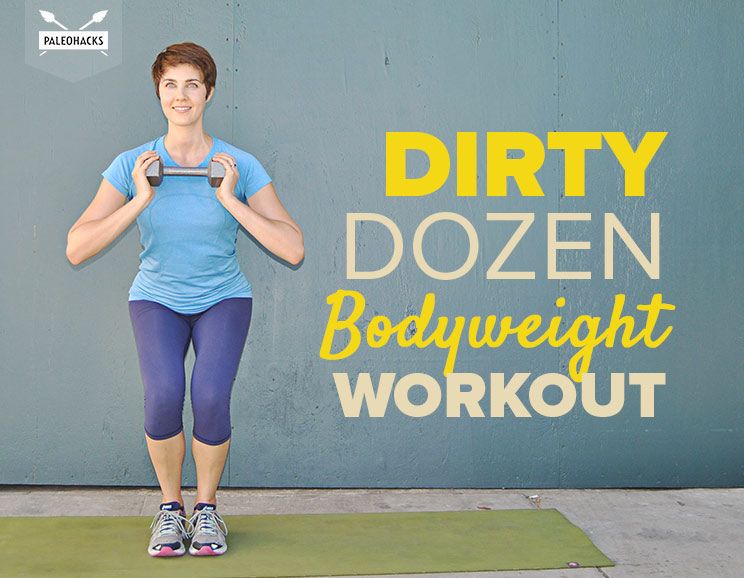

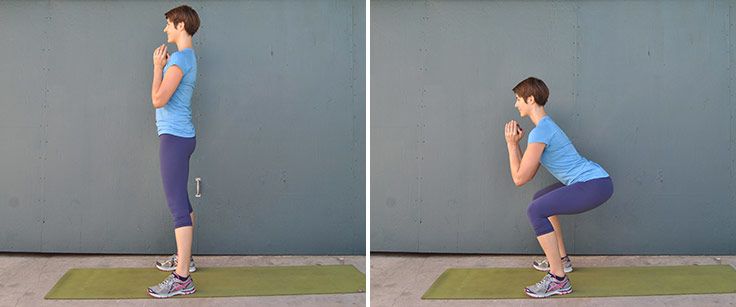
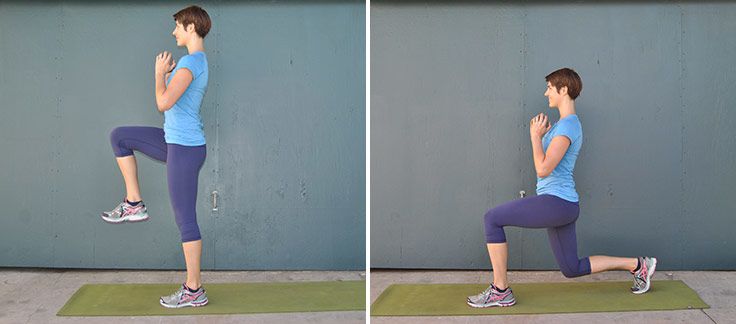
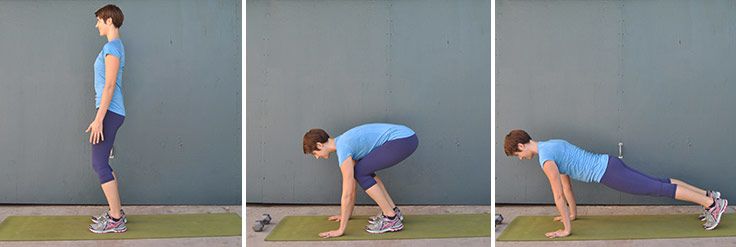
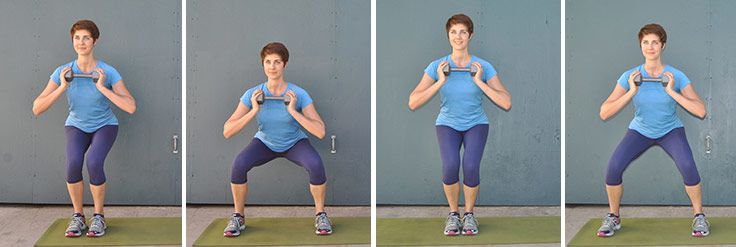

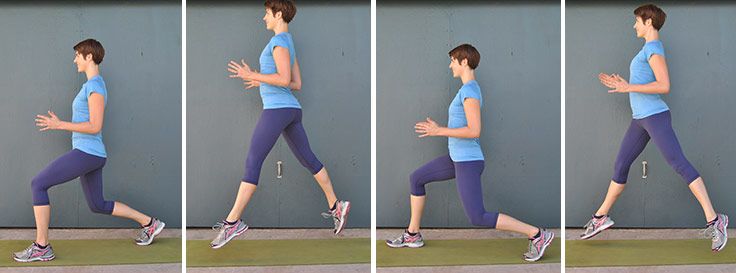
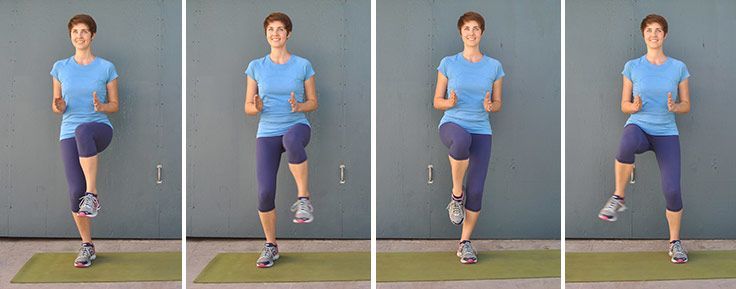

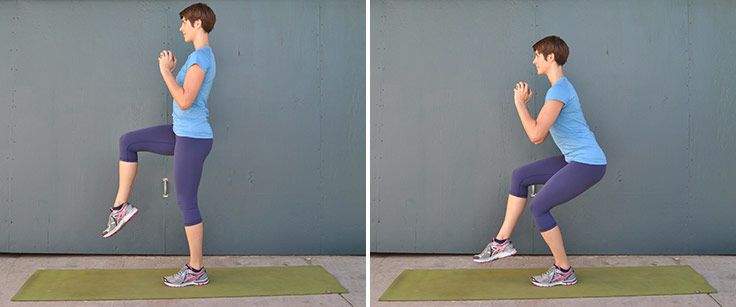




 One-Pan Honey Turmeric Chicken with Asparagus
One-Pan Honey Turmeric Chicken with Asparagus
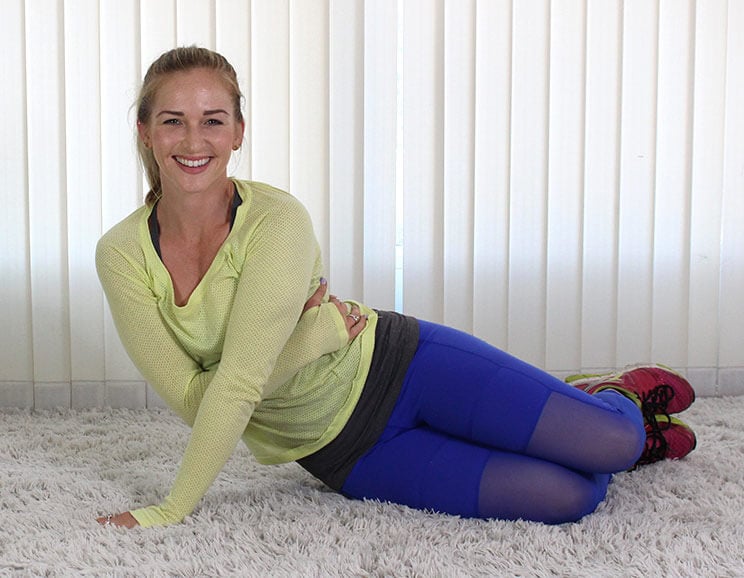
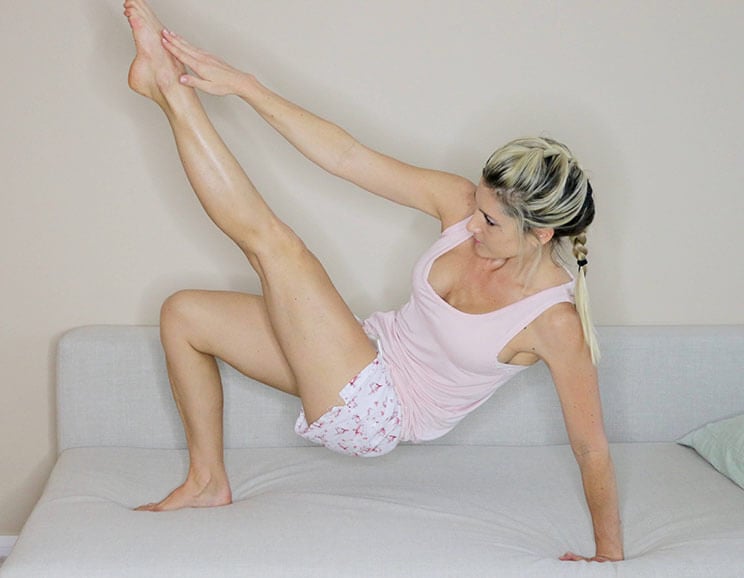
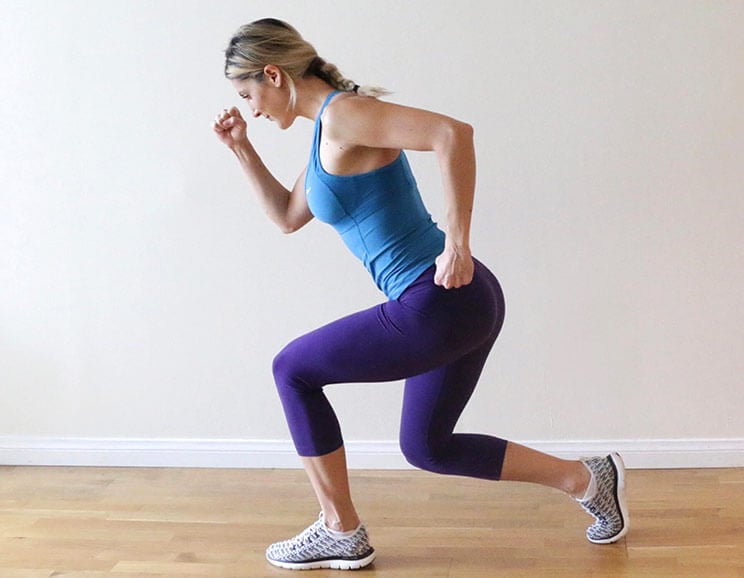
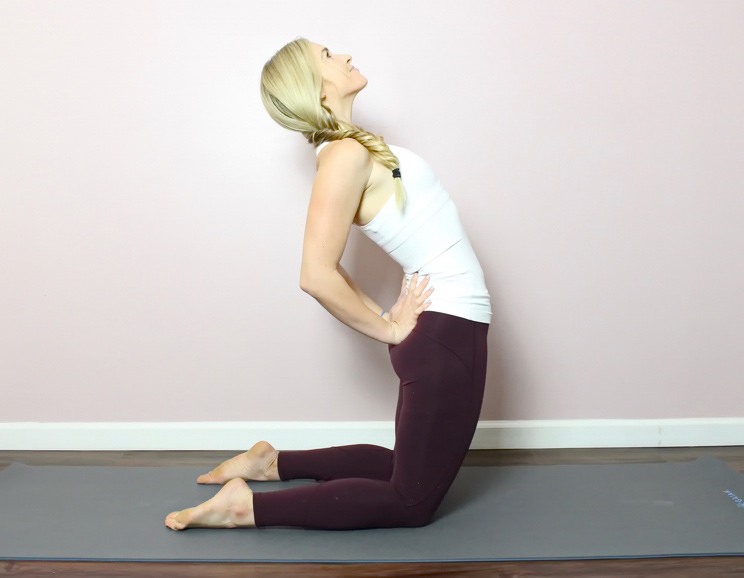

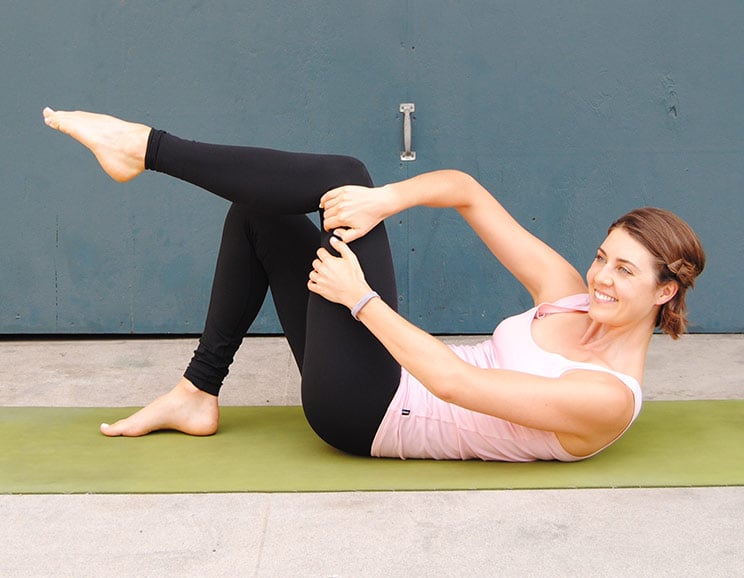
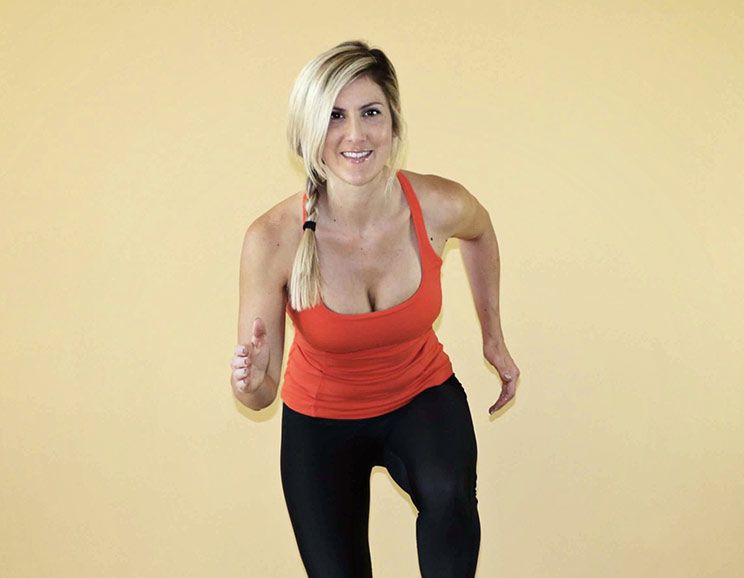
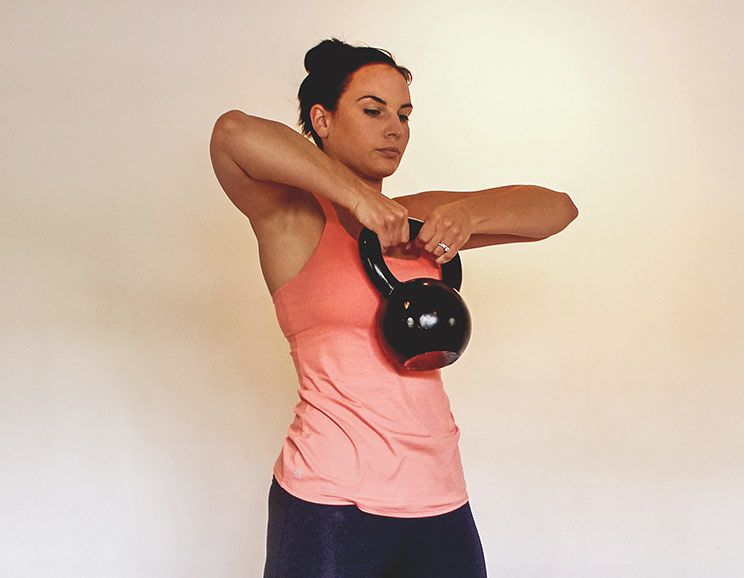
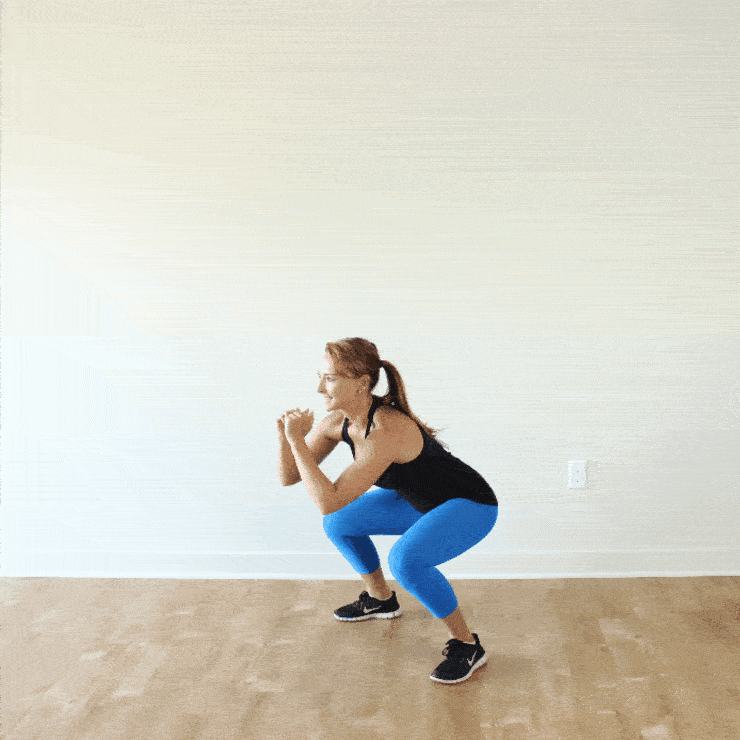
Show Comments